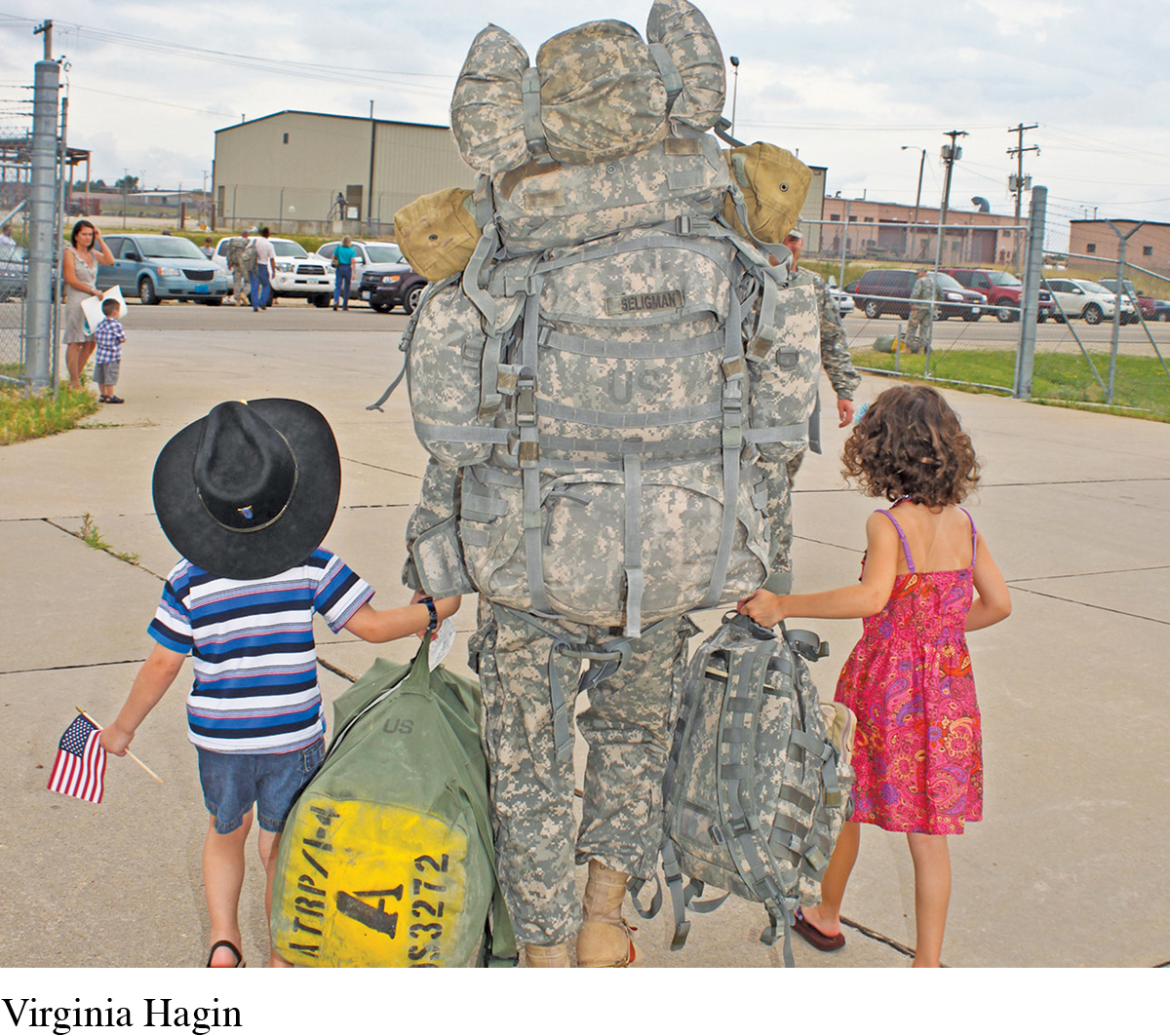1 / Introducing Interpersonal Communication
1
Introducing Interpersonal Communication

 LearningCurve can help you review the material in this chapter. Go to LaunchPad: macmillanhighered.com/
LearningCurve can help you review the material in this chapter. Go to LaunchPad: macmillanhighered.com/
3
She is home with the kids, who are alternating between angry and clingy.1 She’s trying to cook dinner, but the smoke detector keeps blaring, causing the dog to bark. Sure enough, it’s at this moment that the phone rings. Glancing at the caller ID, she sees it is the caller she’d hoped for. She answers, because despite the chaos around her, this could be their last conversation. He says, “I’ve been waiting in line for two hours to talk, and I only have ten minutes. I’ve had a really bad day and miss you all.” What should she say? Choice #1: Lie. Tell him everything’s fine, and mask her frustration with coolness. But he’ll sense her aloofness and leave the conversation worrying about why she is distracted. Is she angry with him? Having an affair? Choice #2: Be honest. Tell him that things are chaotic, and ask whether he can talk to the kids for a minute while she clears her head.
Military wife, author, and New York Times columnist Melissa Seligman has lived this scene many times during her husband’s combat deployments. She has learned to choose the second path because of the inescapable connection between communication choices and relationship outcomes. As she describes, “When a family member is gone for a year at a time, how can you sustain closeness? How do you maintain a three-
4
The Seligmans use multiple media to maintain intimacy, including webcams and exchanging videos, e-
Melissa Seligman uses similarly diverse communication in her professional work with military support groups. “In my working life, I am on Facebook, Skype, and Web conference calls all the time. Texting. Instant-
Through years of experience, Melissa Seligman and her family have learned to cope with intense versions of the challenges we all face in our relationships. How can I better manage my anger and frustration? What can I do to maintain closeness with those I love? How can I communicate in a way that’s both honest and kind? In 2010, she and coauthor Christina Piper released a children’s book, A Heart Apart, which helps young children cope with the absence of military parents. When she is asked to reflect on the importance of communication, Melissa thinks of the next generation: “Children need to know and understand that anger and sadness go along with missing someone. They must be taught the importance of communication, and how to communicate well. This sets them up for success when their emotions begin to flow. Feelings are not right or wrong—
5
My wife and I are out to dinner with our three grown sons—
As I’m driving home, it flashes into my mind that regardless of the particulars, the peak moments of relationship joy that punctuate our lives are created through interpersonal communication. It’s not the dinners, the fireworks, the sunsets, or the concerts that connect us to others. Those things are just, well, things. Instead, it’s our communication. We use interpersonal communication to build, maintain, and even end relationships with romantic partners, family members, friends, coworkers, and acquaintances. We do this through tweeting, texting, instant-
But regardless of how we’re communicating, where, or with whom, one fact inescapably binds us: the communication choices we make determine the personal, interpersonal, and relationship outcomes that follow. When we communicate well, we create desirable outcomes, such as positive emotions, satisfying relationships, and encounters that linger as happy memories. When we communicate poorly, we generate negative outcomes, such as interpersonal conflict, dissatisfaction with a relationship, and bitter lament over things that shouldn’t have been said. By studying interpersonal communication, you can acquire knowledge and skills to boost your interpersonal competence. This will help you build and maintain satisfying relationships and, ultimately, improve your quality of life.
Chapter Theme
The story of this chapter is the story of the text: our communication choices determine our relationship outcomes. We can’t control how others behave toward us, but we can improve our own decision making and the communication that flows from these decisions. When we choose to communicate appropriately, effectively, and ethically with others, our relationships benefit. Learning the knowledge and skills necessary for competent interpersonal communication is essential for ensuring our happiness and that of others.
In this chapter, we begin our study of interpersonal communication. You’ll learn:
What communication is and the different models for communication
The nature of interpersonal communication, the role it plays in relationships, and the needs and goals it helps us fulfill
How to improve your interpersonal communication competence, both online and off
Major issues related to the study of interpersonal communication
chapter outline
6
What Is Communication?
10
What Is Interpersonal Communication?
20
What Is Interpersonal Communication Competence?
27
Issues in Interpersonal Communication
32
The Journey Ahead